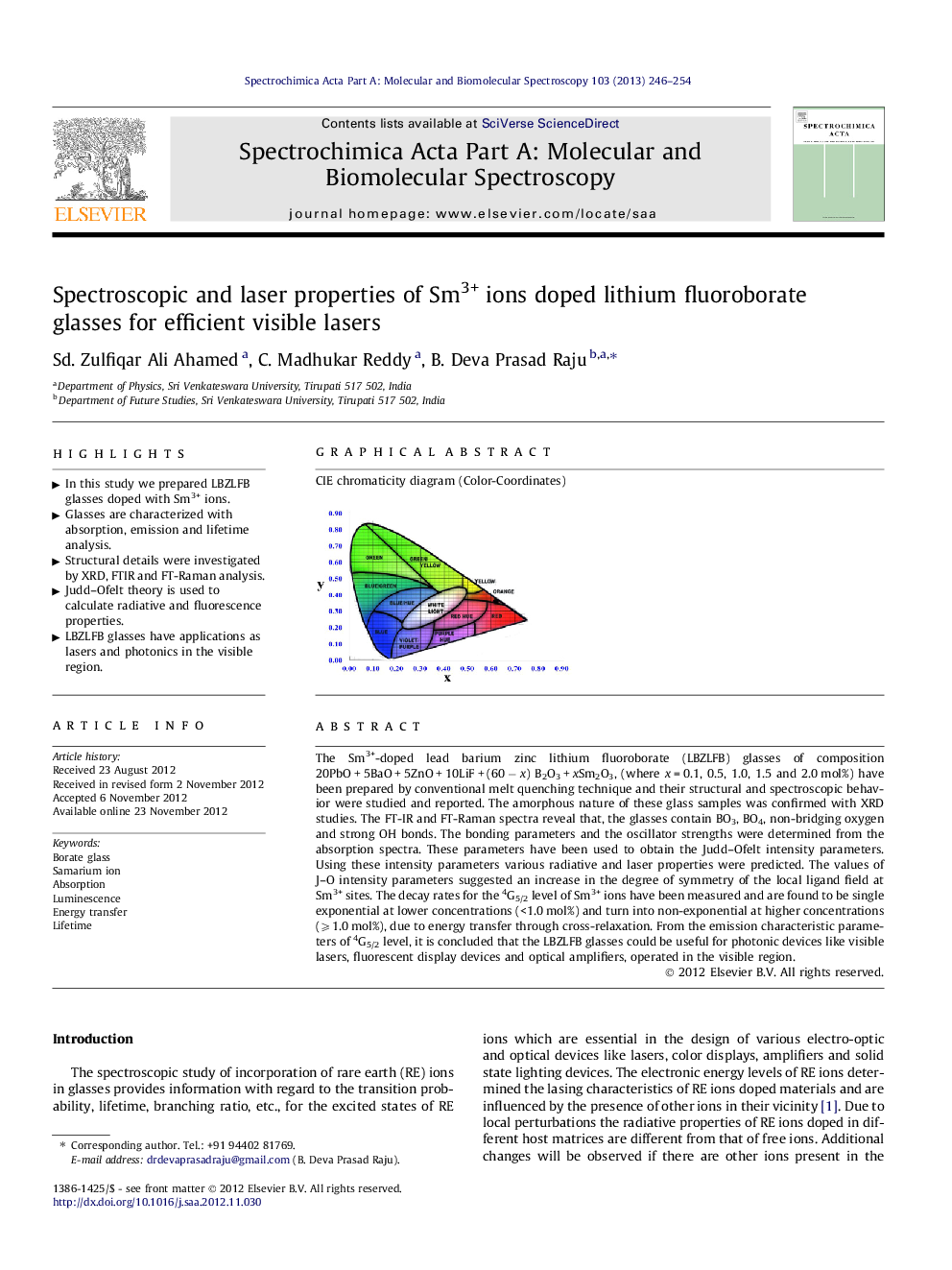| Article ID | Journal | Published Year | Pages | File Type |
|---|---|---|---|---|
| 1232056 | Spectrochimica Acta Part A: Molecular and Biomolecular Spectroscopy | 2013 | 9 Pages |
The Sm3+-doped lead barium zinc lithium fluoroborate (LBZLFB) glasses of composition 20PbO + 5BaO + 5ZnO + 10LiF + (60 − x) B2O3 + xSm2O3, (where x = 0.1, 0.5, 1.0, 1.5 and 2.0 mol%) have been prepared by conventional melt quenching technique and their structural and spectroscopic behavior were studied and reported. The amorphous nature of these glass samples was confirmed with XRD studies. The FT-IR and FT-Raman spectra reveal that, the glasses contain BO3, BO4, non-bridging oxygen and strong OH bonds. The bonding parameters and the oscillator strengths were determined from the absorption spectra. These parameters have been used to obtain the Judd–Ofelt intensity parameters. Using these intensity parameters various radiative and laser properties were predicted. The values of J–O intensity parameters suggested an increase in the degree of symmetry of the local ligand field at Sm3+ sites. The decay rates for the 4G5/2 level of Sm3+ ions have been measured and are found to be single exponential at lower concentrations (<1.0 mol%) and turn into non-exponential at higher concentrations (⩾1.0 mol%), due to energy transfer through cross-relaxation. From the emission characteristic parameters of 4G5/2 level, it is concluded that the LBZLFB glasses could be useful for photonic devices like visible lasers, fluorescent display devices and optical amplifiers, operated in the visible region.
Graphical abstractCIE chromaticity diagram (Color-Coordinates)Figure optionsDownload full-size imageDownload as PowerPoint slideHighlights► In this study we prepared LBZLFB glasses doped with Sm3+ ions. ► Glasses are characterized with absorption, emission and lifetime analysis. ► Structural details were investigated by XRD, FTIR and FT-Raman analysis. ► Judd–Ofelt theory is used to calculate radiative and fluorescence properties. ► LBZLFB glasses have applications as lasers and photonics in the visible region.
